Log in
Search
Latest topics
» Funny what you find when you go lookingby rsv1cox Today at 1:01 pm
» My latest doodle...
by TD ABUSER Today at 11:30 am
» Duende V model from RC Model magazine 1983.
by MauricioB Today at 10:56 am
» Landing-gear tips
by 1975 control line guy Today at 10:07 am
» My N-1R build log
by roddie Yesterday at 6:54 pm
» Brushless motors?
by rsv1cox Yesterday at 6:40 pm
» Free Flight Radio Assist
by rdw777 Yesterday at 6:03 pm
» Tribute Shoestring build
by amurphy6812 Yesterday at 5:43 pm
» Cox 020 PeeWee rebuild questions
by LooseSpinner99 Yesterday at 5:17 pm
» My current avatar photo
by GallopingGhostler Fri Nov 15, 2024 7:39 pm
» It's the X Wing that has a canard
by rdw777 Fri Nov 15, 2024 6:58 pm
» music vids.. some of your favorites
by Kim Thu Nov 14, 2024 3:28 pm
Cox Engine of The Month
postage stamp mounting
Page 2 of 3
Page 2 of 3 •  1, 2, 3
1, 2, 3 
 Re: postage stamp mounting
Re: postage stamp mounting
by getback on Wed Aug 06, 2014 8:52 am
I am up for a couple sets Roddie , I have several engines I don't even know if they run for lack of mounting!
by Kim on Wed Aug 06, 2014 11:06 am
Me too Roddie! Let me know if I need to PM the info !!
These things are small! If they weren't "bent-up" they could be mailed in an envelope.. I'll have to figure something out for safe packaging that wouldn't cost too much.. yet be large enough not to get lost in transit.
I am up for a couple sets Roddie , I have several engines I don't even know if they run for lack of mounting!
by Kim on Wed Aug 06, 2014 11:06 am
Me too Roddie! Let me know if I need to PM the info !!
These things are small! If they weren't "bent-up" they could be mailed in an envelope.. I'll have to figure something out for safe packaging that wouldn't cost too much.. yet be large enough not to get lost in transit.
 plate-bending jig-blocks
plate-bending jig-blocks
I made these today after work. They're 19mil (3/4") thick sheet-PVC.. cut into 1" square blocks, with slots milled to varying depths for bending the 90 degree angle in the plate-sets.. while clamped in a bench vise. This will help to determine the best overall "length" of the plates, to provide just enough clearance between the venturi.. and a radial firewall mount.. and also clearance for steel flat washers.
The slots are stepped 1/4" to 3/8" deep.. in 1/32"" increments.

The slots are stepped 1/4" to 3/8" deep.. in 1/32"" increments.

 Re: postage stamp mounting
Re: postage stamp mounting
Well.. I just bent-up a plate using the 1/4" depth slotted-block. This should work well.
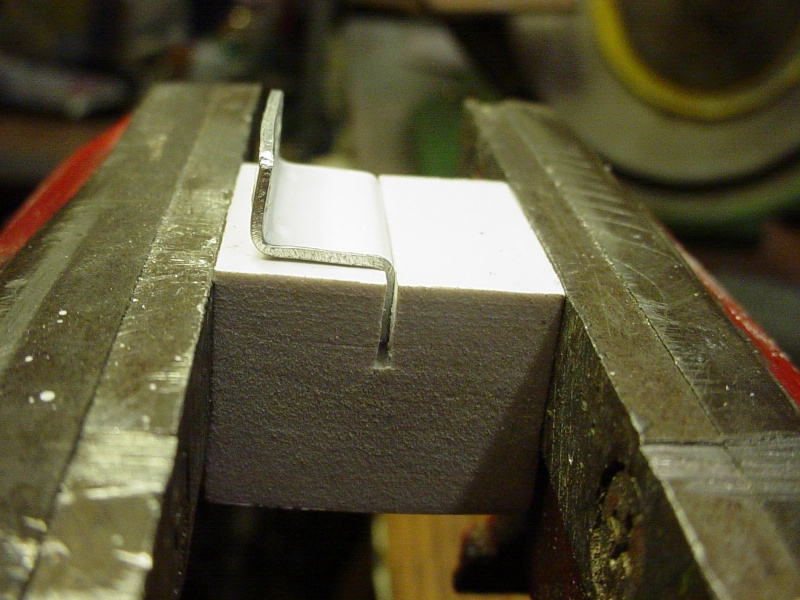
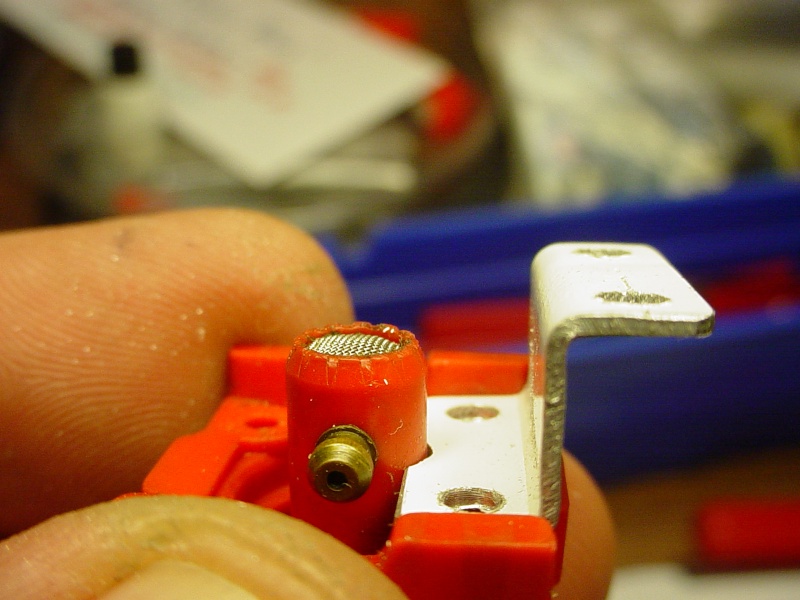
The overall length of the plates could be shortened-up another 1/8"-5/32".. and still have ample clearance for the venturi.. using a firewall mounting.



The overall length of the plates could be shortened-up another 1/8"-5/32".. and still have ample clearance for the venturi.. using a firewall mounting.

 Re: postage stamp mounting
Re: postage stamp mounting
roddie wrote: by getback on Wed Aug 06, 2014 8:52 am
I am up for a couple sets Roddie , I have several engines I don't even know if they run for lack of mounting!
by Kim on Wed Aug 06, 2014 11:06 am
Me too Roddie! Let me know if I need to PM the info !!
These things are small! If they weren't "bent-up" they could be mailed in an envelope.. I'll have to figure something out for safe packaging that wouldn't cost too much.. yet be large enough not to get lost in transit.
What a concept. I think I will need to use this on some other projects I have to finish up.
Phil

pkrankow- Top Poster

- Posts : 3025
Join date : 2012-10-02
Location : Ohio
 Re: postage stamp mounting
Re: postage stamp mounting
Roddie looking GOOD !! have you any mounts ready you want to sell ??  Eric
Eric

getback- Top Poster



Posts : 10435
Join date : 2013-01-18
Age : 67
Location : julian , NC
 Re: postage stamp mounting
Re: postage stamp mounting
Wow Roddie, those are awesome! I think I would like to have a couple of sets that are just "L" shaped so they could be screwed into a block on the side like on the plans shown earlier. Of course that means I need to start looking for some postage stamps!
Mike
Mike
 Re: postage stamp mounting
Re: postage stamp mounting
Eric and Mike, Thanks for your interest! "PM" me with your addresses.. and what type/configuration/quantity of mounts that you're interested in. They certainly won't cost much to put in the mail... and I'd really like to see them put to use!
I hope to "bench-run" a postage-stamp back-plate before the end of the week.. (no band gigs for the next two weekends! )
)
I hope to "bench-run" a postage-stamp back-plate before the end of the week.. (no band gigs for the next two weekends!
 Re: postage stamp mounting
Re: postage stamp mounting
Just managed to score one of these original Goldberg engine mount kits, including a fuel bladder.
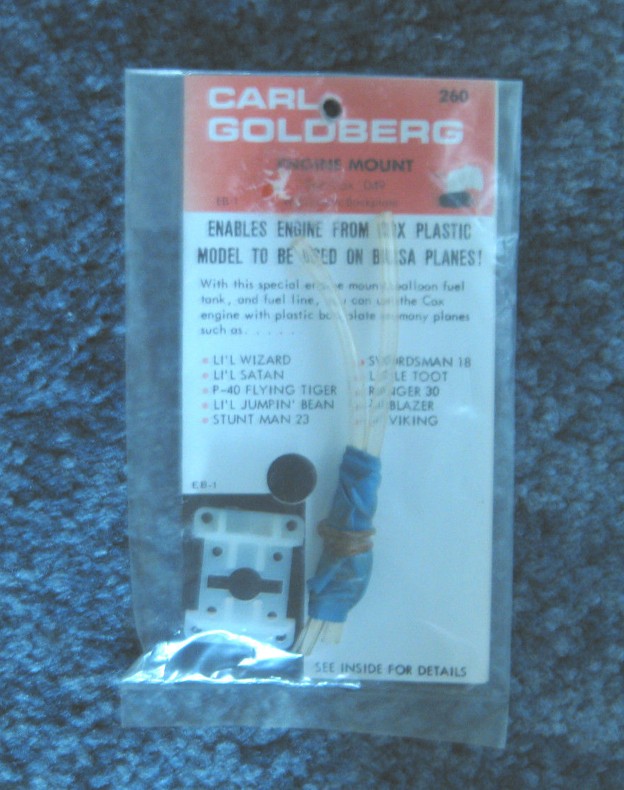
I guess after all this time the balloon mighty be perished, but I'm keen to be able to utilise one of my "postage stamp" engines without messing around making up mounts. Problem is the postage cost more than the kit (& probably more that what I paid on average for the engines).
Rod.

I guess after all this time the balloon mighty be perished, but I'm keen to be able to utilise one of my "postage stamp" engines without messing around making up mounts. Problem is the postage cost more than the kit (& probably more that what I paid on average for the engines).
Rod.

Oldenginerod- Top Poster

- Posts : 4018
Join date : 2012-06-15
Age : 62
Location : Drouin, Victoria
 Re: postage stamp mounting
Re: postage stamp mounting
Oldenginerod wrote:Just managed to score one of these original Goldberg engine mount kits, including a fuel bladder.
I guess after all this time the balloon mighty be perished, but I'm keen to be able to utilise one of my "postage stamp" engines without messing around making up mounts. Problem is the postage cost more than the kit (& probably more that what I paid on average for the engines).
Rod.
That's a COOL find Rod! Now you'll at least be able to mount and run those engines!

 Re: postage stamp mounting
Re: postage stamp mounting
I think I'm at the final stage in development with these plates. I shortened them up by 3/32" (.093") and cut the .040" thick aluminum in X4 passes at .010"/pass which really improves the finish.. and needs virtually no de-burring after being cut. I added a radius-cut for the venturi.. which I had been previously forming with a rat-tail file.
Here's what it looks like in the CAD program..

I just added a circle-cut, in between the nested plates to form that radius for the venturi. I only needed to set-up two plates initially.. then I can do "repeats" on the X and Y axis directions. There are 20 "sets" of plates here, that I ran on my lunch break today.
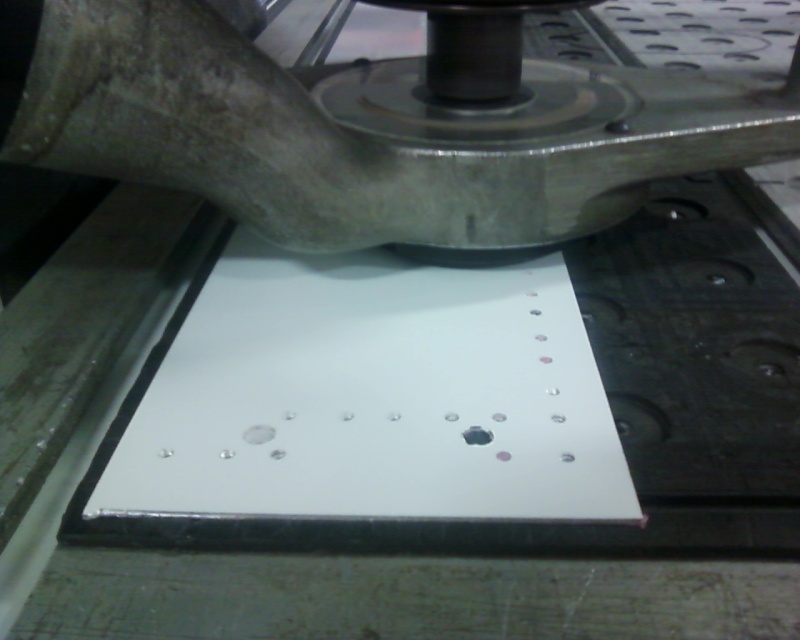
Here is the "shorter" plate (right) as compared to one from the last run (left).. as you can see.. it looks a lot better.

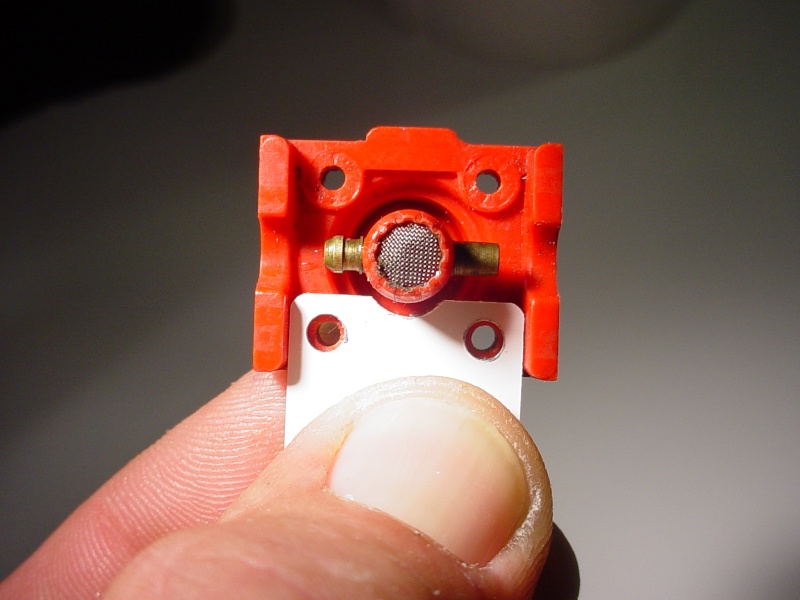
I'll bend-up a set tomorrow, and check the firewall clearance for the venturi.
Here's what it looks like in the CAD program..

I just added a circle-cut, in between the nested plates to form that radius for the venturi. I only needed to set-up two plates initially.. then I can do "repeats" on the X and Y axis directions. There are 20 "sets" of plates here, that I ran on my lunch break today.

Here is the "shorter" plate (right) as compared to one from the last run (left).. as you can see.. it looks a lot better.


I'll bend-up a set tomorrow, and check the firewall clearance for the venturi.
 Re: postage stamp mounting
Re: postage stamp mounting
They did clean up nicely Roddie looken good!! Don't forget to Eat on your lunch break  Eric
Eric

getback- Top Poster



Posts : 10435
Join date : 2013-01-18
Age : 67
Location : julian , NC
 Re: postage stamp mounting
Re: postage stamp mounting
Here is an example of what a radial mount looks like with the plates shortened-up and bent into a 90 degree "Z". I "REALLY" want to fire this pup up now!
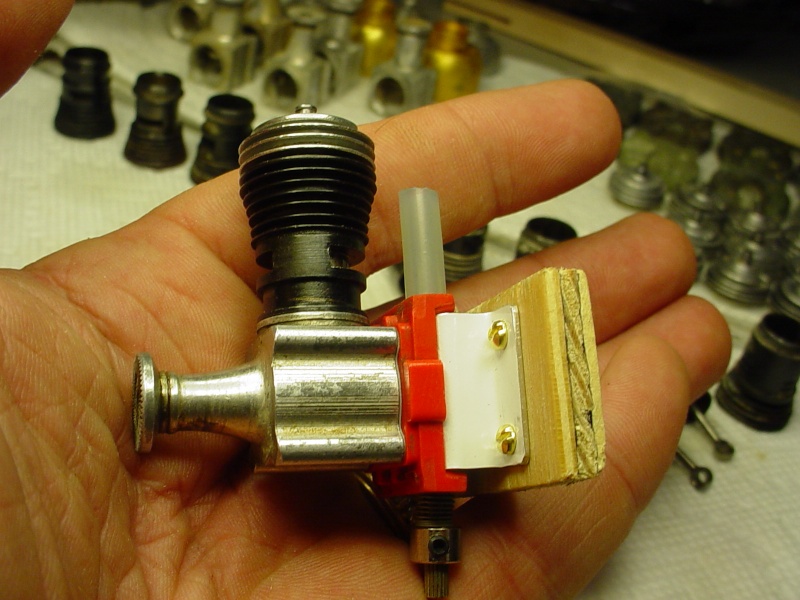

This is the firewall clearance I was shooting for.

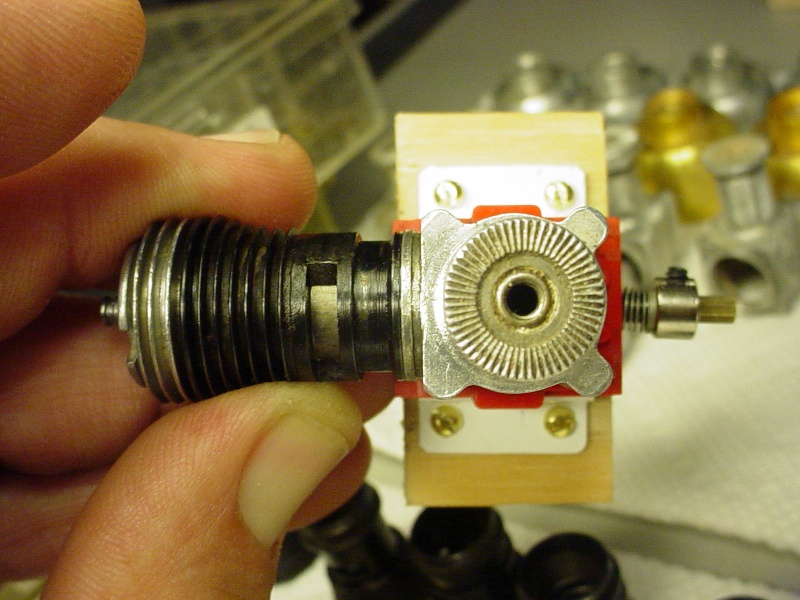
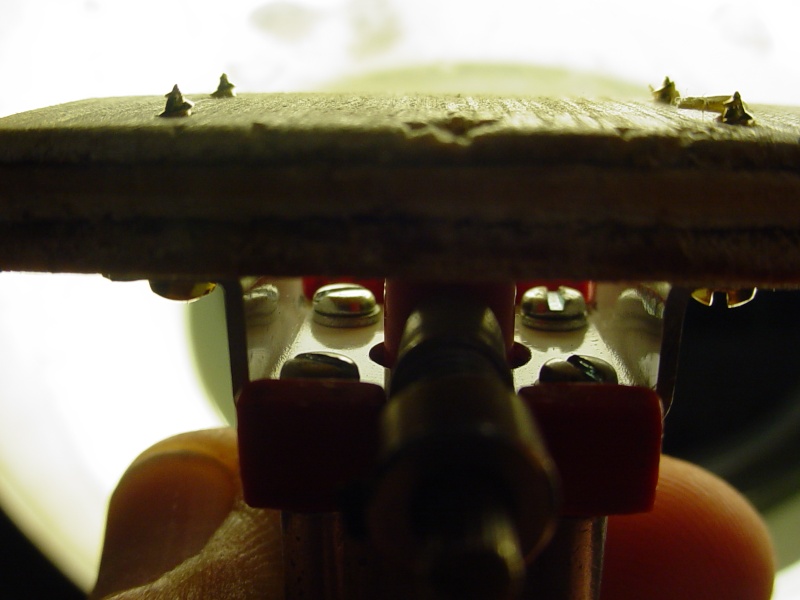
"L" mounts (like what's used on the "290 Special" model) will be super-streamlined.. but requires building a "solid" hardwood block firewall (w/grain running horizontally) to accept screws from the top/bottom.


This is the firewall clearance I was shooting for.



"L" mounts (like what's used on the "290 Special" model) will be super-streamlined.. but requires building a "solid" hardwood block firewall (w/grain running horizontally) to accept screws from the top/bottom.
 Re: postage stamp mounting
Re: postage stamp mounting
roddie wrote:Here is an example of what a radial mount looks like with the plates shortened-up and bent into a 90 degree "Z". I "REALLY" want to fire this pup up now!
"L" mounts (like what's used on the "290 Special" model) will be super-streamlined.. but requires building a "solid" hardwood block firewall (w/grain running horizontally) to accept screws from the top/bottom.
Awesome job, Roddie! Those look great!
The Admiring Mark
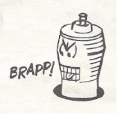
batjac- Diamond Member



Posts : 2373
Join date : 2013-05-22
Age : 61
Location : Broken Arrow, OK, USA
 Re: postage stamp mounting
Re: postage stamp mounting
PPPPPPPPPPPPERRRRefffffffccccttttt U are the MAN!!!!

getback- Top Poster



Posts : 10435
Join date : 2013-01-18
Age : 67
Location : julian , NC
 Re: postage stamp mounting
Re: postage stamp mounting
Thanks guys!!! I have your addresses on file.. keep an eye out for a package soon from Roddie.. in the mail.
 Re: postage stamp mounting
Re: postage stamp mounting
This thread is an excellent example of thought, fine tuning and "trial and error" leading to a very nice and useful product.
What did you "stick" the aluminium to the sacrificial board with ad to stop the parts moving about as they were cut through?
What did you "stick" the aluminium to the sacrificial board with ad to stop the parts moving about as they were cut through?

ian1954- Diamond Member

- Posts : 2688
Join date : 2011-11-16
Age : 70
Location : England
 Re: postage stamp mounting
Re: postage stamp mounting
ian1954 wrote:This thread is an excellent example of thought, fine tuning and "trial and error" leading to a very nice and useful product.
What did you "stick" the aluminium to the sacrificial board with ad to stop the parts moving about as they were cut through?
Ian, The 1mm (.040") aluminum sheet comes with a thin film approx. .01mm (.003") of scratch-protective liner, adhered to one side. I then additionally "mask" that side with sticky-paper that is .017mm (.005"). The sheet lays "masked-side down" on the vacuum table.. which holds the sheet from moving. The cutting is done in 4 passes at .25mm/pass. I used a feed rate of 50 inches per minute. The holes are drilled through FIRST.. and also "peck-drilled" in .25mm increments. The profile is done last.. and has an "inlay" cut which rounds the corners to the same radius as the tools diameter. The entire job is done with a 3.18mm (.125") diameter endmill. This method of cutting in multiple passes yielded a better finish.. and also helped keep the pieces from moving.. with the last pass cutting only .25mm.. rather than the entire 1mm thickness all at once.
This is the same brand and size endmill that I used. Ian, you may be familiar with the type of metal used in it's construction. I believe it's a European spec.

We use these "exclusively" at work, for cutting foam-board, plastics/cast acrylics, wood, and obviously aluminum.. up to 2.0mm thickness. The routers that I use, are not equipped to cut steel.. or other composite materials requiring coolant. I am the only person at this company who has ever had any metal-machining experience.. and the "methods" that apply to speed/feed-rates for extended tool life; by the means of using certain ones for a particular purpose... and "documenting" standards. It's ridiculous to see what a company will spend on tooling.. where there's no actual "engineering" department, to write the CNC programs.. and figure-in the cost of tooling to manufacture a product.
 a better plate-bending jig
a better plate-bending jig
The most laborious task in making these mounts, is in the bending.. and having the four bends be equally "square" to each other on both plates. I had initially made a 1 inch square PVC block with a 1/4" deep slot.. 1/16" (.062") in width.. because I was limited to our (smallest) 1/16" diameter endmill to cut the slot. The plates are .040" thick.. (leaving a .022" gap in the slot) Clamping the jig-block and plate in a vise "closes" the gap at the top.. but the PVC is soft; compared to the aluminum.. and deforms.. preventing a sharp corner from being made.

I thought to myself; "there must be a better way"... so I made another block with a 1/8" (.125") wide slot.. 1/4" deep.. and cut two jaws from the same .040" aluminum; 1/4" x 1.0" to fit in the slot, and "sandwich" the .040" plate. (.040" x3= .120")


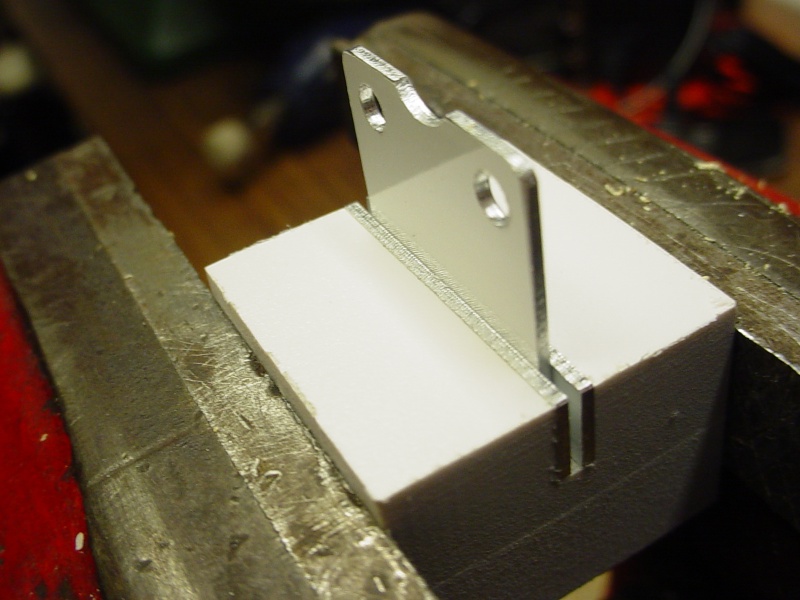
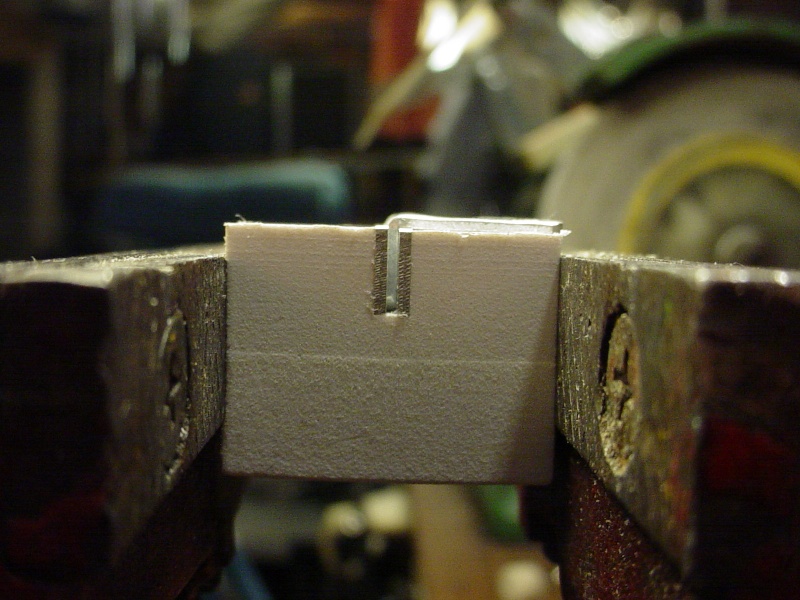
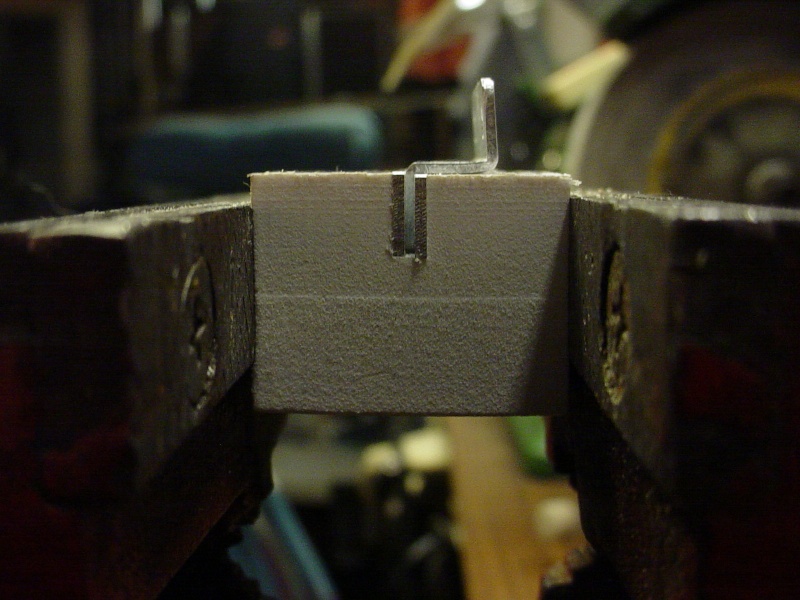
not bad.. but you can clearly see the now "downward" pressure exerted on the right jaw from the bends.. embedding it into the floor of the slot in the PVC block. I made 8 of these PVC blocks today.. which should be enough to bend all the mount-plates that I made. Kim, Eric and Mark M. are all interested in trying these out.. and I don't want to send them "Shoddy-Roddie" examples of my workmanship..

I thought to myself; "there must be a better way"... so I made another block with a 1/8" (.125") wide slot.. 1/4" deep.. and cut two jaws from the same .040" aluminum; 1/4" x 1.0" to fit in the slot, and "sandwich" the .040" plate. (.040" x3= .120")





not bad.. but you can clearly see the now "downward" pressure exerted on the right jaw from the bends.. embedding it into the floor of the slot in the PVC block. I made 8 of these PVC blocks today.. which should be enough to bend all the mount-plates that I made. Kim, Eric and Mark M. are all interested in trying these out.. and I don't want to send them "Shoddy-Roddie" examples of my workmanship..

 Re: postage stamp mounting
Re: postage stamp mounting
It is not easy to get a sharp bend with aluminium. It work hardens and hardens with age. It is not always as soft and malliable as you think.
I'm not sure how sharp a bend is needed but I use a "V" blade pressing the sheet into a "V" groove. This exerts pressure into the corner evenly and the bend is formed at the corner outwards.
It is also possible to make the bend easier by annealing the aluminium but this can be fraught.
You need to be very careful as the difference in temperature between softening and melting is marginal.
Clean up the metal first before coating it with household soap, directly from the bar, covering the area of the aluminium you need to anneal (any brand will do providing it is a solid household soap with no moisturiser).
With your blow-lamp set at a low heat, run it around the surface, warming the work up generally and make a point of not keeping your flame in one place for too long.
Keep warming it up until you see the soap turning black and then shut the heat off rapidly and dip it quickly in water water.
Give it a shine (heating will dull it) and bend it.
I'm not sure how sharp a bend is needed but I use a "V" blade pressing the sheet into a "V" groove. This exerts pressure into the corner evenly and the bend is formed at the corner outwards.
It is also possible to make the bend easier by annealing the aluminium but this can be fraught.
You need to be very careful as the difference in temperature between softening and melting is marginal.
Clean up the metal first before coating it with household soap, directly from the bar, covering the area of the aluminium you need to anneal (any brand will do providing it is a solid household soap with no moisturiser).
With your blow-lamp set at a low heat, run it around the surface, warming the work up generally and make a point of not keeping your flame in one place for too long.
Keep warming it up until you see the soap turning black and then shut the heat off rapidly and dip it quickly in water water.
Give it a shine (heating will dull it) and bend it.

ian1954- Diamond Member

- Posts : 2688
Join date : 2011-11-16
Age : 70
Location : England
 Re: postage stamp mounting
Re: postage stamp mounting
ian1954 wrote:It is not easy to get a sharp bend with aluminium. It work hardens and hardens with age. It is not always as soft and malliable as you think.
I'm not sure how sharp a bend is needed but I use a "V" blade pressing the sheet into a "V" groove. This exerts pressure into the corner evenly and the bend is formed at the corner outwards.
It is also possible to make the bend easier by annealing the aluminium but this can be fraught.
You need to be very careful as the difference in temperature between softening and melting is marginal.
Clean up the metal first before coating it with household soap, directly from the bar, covering the area of the aluminium you need to anneal (any brand will do providing it is a solid household soap with no moisturiser).
With your blow-lamp set at a low heat, run it around the surface, warming the work up generally and make a point of not keeping your flame in one place for too long.
Keep warming it up until you see the soap turning black and then shut the heat off rapidly and dip it quickly in water water.
Give it a shine (heating will dull it) and bend it.
Hi Ian, I have no idea what "grade" this aluminum sheet is... but I'm sure it's not "machining-grade". The .040" thickness bends fairly easily by hand.. (even the 2nd bend, having less leverage to work with..) Once clamped in the vise, I start the bend with my thumbs.. to about 45 degrees, and finish the 90 using a small aluminum block; tapping with a small hammer.
This thickness aluminum plate is sturdy enough for the purpose, yet very lightweight. It may bend from a nose-in crash... but that could save the plastic backplate.. and "possibly" the nose of the model, from more severe damage.
 Re: postage stamp mounting
Re: postage stamp mounting
Hi Roddie,
I think that the method you are using is perfect for these mounts and providing a bending method with the plates is good planning. Using the tool for positioning accurately as well as bending is a bonus.
I am obviously not familiar with the material you are using as I bend and shape brass, steel, copper, aluminium ............ and, often, because of the application I need as sharp a bend as possible. This can weaken the metal.
If I fold card I usually score the reverse side to make a crisp fold. With thin metal sheet - I score the line with a blade. Thicker sheet, I may machine a V groove at a slightly smaller angle then the bend to allow for the metal springing back.
I tend to use a V tool with a V groove to make metal bending easier.

If I score - I weaken the metal but get a crisp fold. If I just use the V block (the V block having a narrower angle to allow springing back) - I get a stronger fold but not quite as sharp.
I think that bringing the postage stamp engines back into service is a marvelous project. (Even if these mounts are only going to be used to display a shelf queen!)
I think that the method you are using is perfect for these mounts and providing a bending method with the plates is good planning. Using the tool for positioning accurately as well as bending is a bonus.
I am obviously not familiar with the material you are using as I bend and shape brass, steel, copper, aluminium ............ and, often, because of the application I need as sharp a bend as possible. This can weaken the metal.
If I fold card I usually score the reverse side to make a crisp fold. With thin metal sheet - I score the line with a blade. Thicker sheet, I may machine a V groove at a slightly smaller angle then the bend to allow for the metal springing back.
I tend to use a V tool with a V groove to make metal bending easier.

If I score - I weaken the metal but get a crisp fold. If I just use the V block (the V block having a narrower angle to allow springing back) - I get a stronger fold but not quite as sharp.
I think that bringing the postage stamp engines back into service is a marvelous project. (Even if these mounts are only going to be used to display a shelf queen!)

ian1954- Diamond Member

- Posts : 2688
Join date : 2011-11-16
Age : 70
Location : England
 Re: postage stamp mounting
Re: postage stamp mounting
ian1954 wrote:Hi Roddie,
I think that the method you are using is perfect for these mounts and providing a bending method with the plates is good planning. Using the tool for positioning accurately as well as bending is a bonus.
I am obviously not familiar with the material you are using as I bend and shape brass, steel, copper, aluminium ............ and, often, because of the application I need as sharp a bend as possible. This can weaken the metal.
If I fold card I usually score the reverse side to make a crisp fold. With thin metal sheet - I score the line with a blade. Thicker sheet, I may machine a V groove at a slightly smaller angle then the bend to allow for the metal springing back.
I tend to use a V tool with a V groove to make metal bending easier.
If I score - I weaken the metal but get a crisp fold. If I just use the V block (the V block having a narrower angle to allow springing back) - I get a stronger fold but not quite as sharp.
I think that bringing the postage stamp engines back into service is a marvelous project. (Even if these mounts are only going to be used to display a shelf queen!)
Bending sheet materials can be a science in itself! I imagine that heating (to a certain degree) will relieve stress, when forming a sharp corner. I also think that "force" has a lot to do with how much the material is stressed. There is "heat" generated when forming any material "cold"... by the re-arranging of it's molecules. (I think I'm correct about this.. right?
 ) This would explain why certain plastics will "bend" if bent slowly.. yet they will "snap" if bent abruptly. Bending thin sheet metal "back and forth "briskly".. will usually break it.. (and you can feel the heat).. yet bending "slowly" in the same fashion; takes much more time for the material to separate.
) This would explain why certain plastics will "bend" if bent slowly.. yet they will "snap" if bent abruptly. Bending thin sheet metal "back and forth "briskly".. will usually break it.. (and you can feel the heat).. yet bending "slowly" in the same fashion; takes much more time for the material to separate. I am satisfied with the latest bending jig-block that I have made. The bends are tighter.. and there is no visual sign of any fatigue/cracking. I am also achieving fairly accurate repeatability.. as far as square'ness is concerned.
I mentioned the "weight" of the postage-stamp backplate a few posts ago... being slightly lighter than the horseshoe production backplate. My digital scale confirmed this. Tonight I decided to check the weights of two "Bee" engines for comparison. Although they don't have identical crankcases; the cylinders are the same.. and there are no needles installed in either engine.
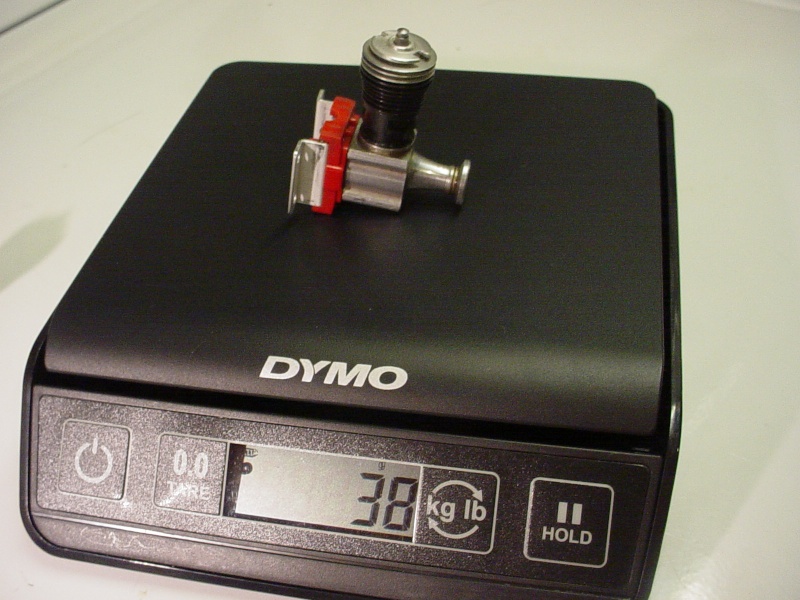
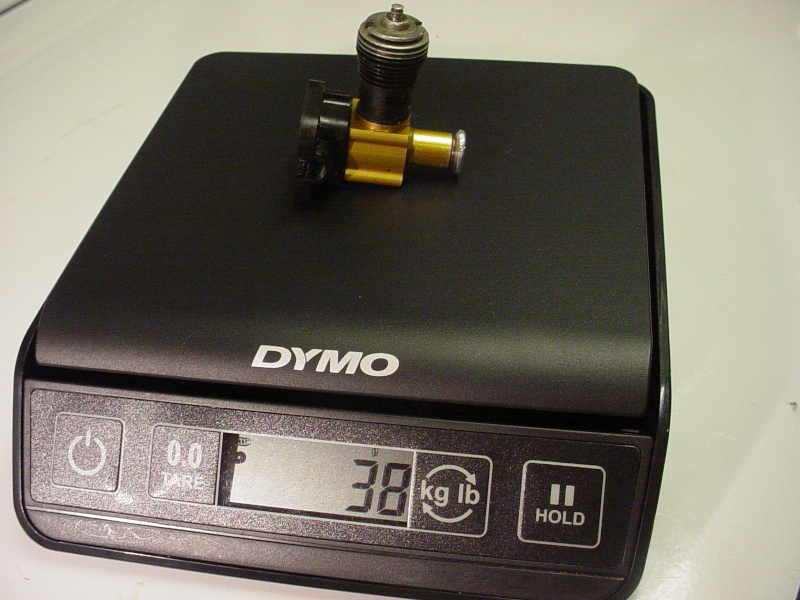
At least these mounts don't add any additional weight over the horseshoe style.
I was getting this postage-stamp engine ready to run.. and found that a used copper "star" shaped reed had the best seal, for some reason. I tried Mylar and Teflon... and they both leaked with the circlip-holder I was using. Then tonight.. I installed a R/H spring-starter.. and grabbed one of my NOS Cox black 6 x 2's for bench-testing this weekend. Guess what.. they're L/H props!
 Re: postage stamp mounting
Re: postage stamp mounting
They are here and mounted ..... I want have time to run it right now have to go get Boy and do a meeting
I want have time to run it right now have to go get Boy and do a meeting  Thanks Roddie even comes with hardware very nice
Thanks Roddie even comes with hardware very nice 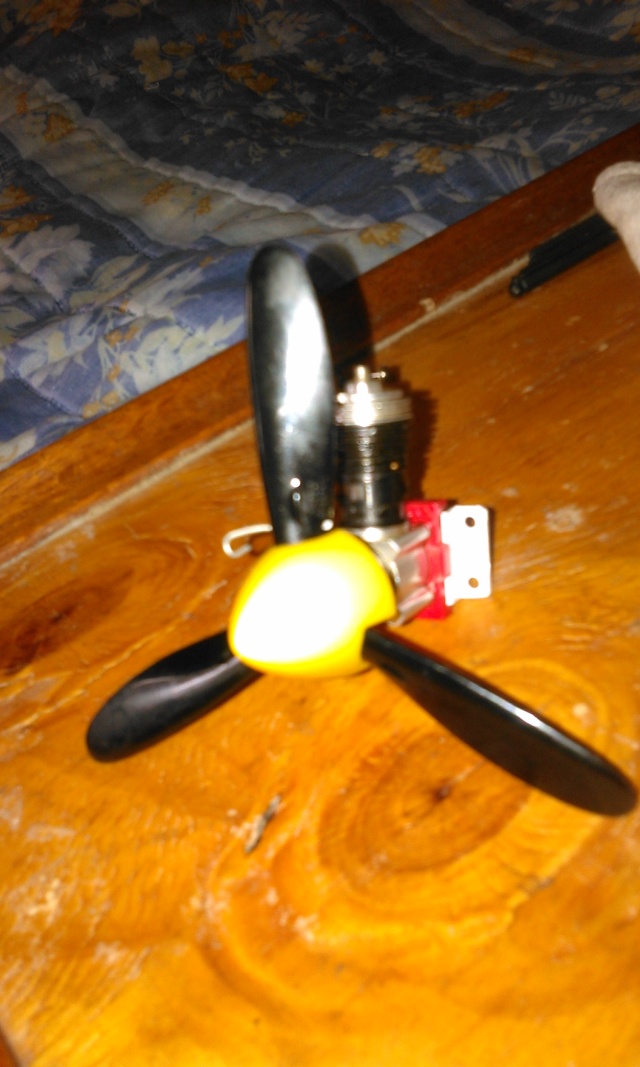
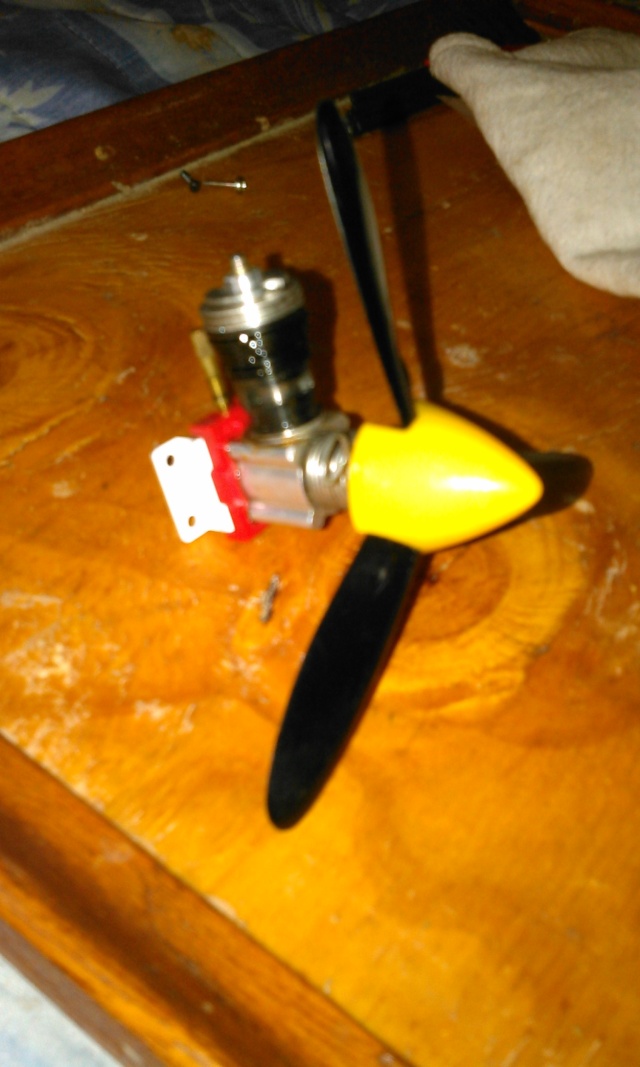 Later for now !Getback
Later for now !Getback  I am back with report after some cleaning I didn't know it needed , stupid window phone was over loaded but I was getting 19.7- 20.5 out of her the clearance is very close to the air intake butttt video is loading down now
I am back with report after some cleaning I didn't know it needed , stupid window phone was over loaded but I was getting 19.7- 20.5 out of her the clearance is very close to the air intake butttt video is loading down now
 I want have time to run it right now have to go get Boy and do a meeting
I want have time to run it right now have to go get Boy and do a meeting 
 Later for now !Getback
Later for now !Getback Last edited by getback on Fri Aug 29, 2014 4:47 pm; edited 1 time in total (Reason for editing : add run report)

getback- Top Poster



Posts : 10435
Join date : 2013-01-18
Age : 67
Location : julian , NC
 Re: postage stamp mounting
Re: postage stamp mounting
ian1954 wrote:
A classic air brake bender! Typically the groove is some angle less than 90 degrees so after spring back the bend is exact. The insert has some radius to it so a hard edge is not formed.
Phil

pkrankow- Top Poster

- Posts : 3025
Join date : 2012-10-02
Location : Ohio
 Re: postage stamp mounting
Re: postage stamp mounting
my Best run for today my God some one left the window open there at first 


getback- Top Poster



Posts : 10435
Join date : 2013-01-18
Age : 67
Location : julian , NC
Page 2 of 3 •  1, 2, 3
1, 2, 3 
 Similar topics
Similar topics» Cox postage stamp backplates.
» Postage stamp backplates
» *Cox Engine of The Month* Submit your pictures! -February 2023-
» CG postage stamp mounts.
» Cox Postage Stamp Engine Mount
» Postage stamp backplates
» *Cox Engine of The Month* Submit your pictures! -February 2023-
» CG postage stamp mounts.
» Cox Postage Stamp Engine Mount
Page 2 of 3
Permissions in this forum:
You cannot reply to topics in this forum

 Rules
Rules








